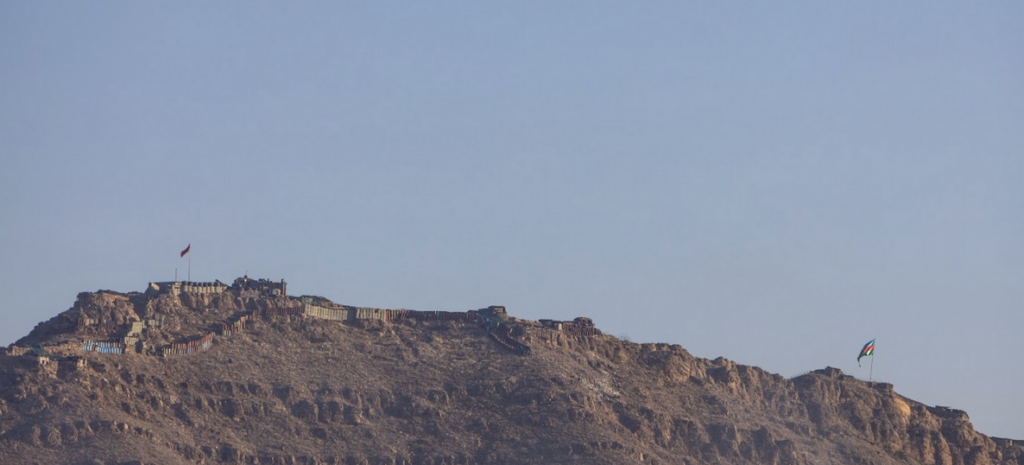In the village of Armash, a hundred kilometres south of the Armenian capital Yerevan, Anishit (her name has been changed for her own safety) looks up at a huge flag. It is flying from the crest of the mountain that towers above her house, and it features not the red, blue and orange of Armenia but the azure, red and green of Azerbaijan. As she feeds her chickens, this pensioner confides her anxiety: “We're stuck on this frontier. That's why we're scared.”
We are at the junction of Turkey, Iran, Armenia, and the Azerbaijani exclave of Nakhchivan. The few villages in this valley are caught in a vice. Four kilometres from Armash, the forces of Yerevan and Baku face each other off. The parties are separated by the E117 road, that winds its way from Russia to Iran while carefully avoiding Azerbaijan.
From the trenches, the belligerents keep watch on each other. The main road is in daily use by lorries that date from another era. Here at the foot of Mount Ararat, the positions are frozen in place and the pillboxes occupied. Behind sandbags, silhouettes of soldiers are visible.
Anishit refuses to say anything more about this sad scene. Instead, she points to a building a few streets down. A white, blue and red flag hangs over a shed. It is occupied by Russian forces. Since 2020, Moscow has stationed several thousand border guards in Armenia.
In agreement with Yerevan, the guards are deployed in five provinces to enforce the terms of the ceasefire agreed with Azerbaijan following the Nagorno-Karabakh conflict in 2020. Before returning to her farm, Anishit has a simple thought to share: “Today, we have only one dream: to be Armenian and to live here.”

Do you like our work?
Help multilingual European journalism to thrive, without ads or paywalls. Your one-off or regular support will keep our newsroom independent. Thank you!













Join the discussion
Become a member to translate comments and participate